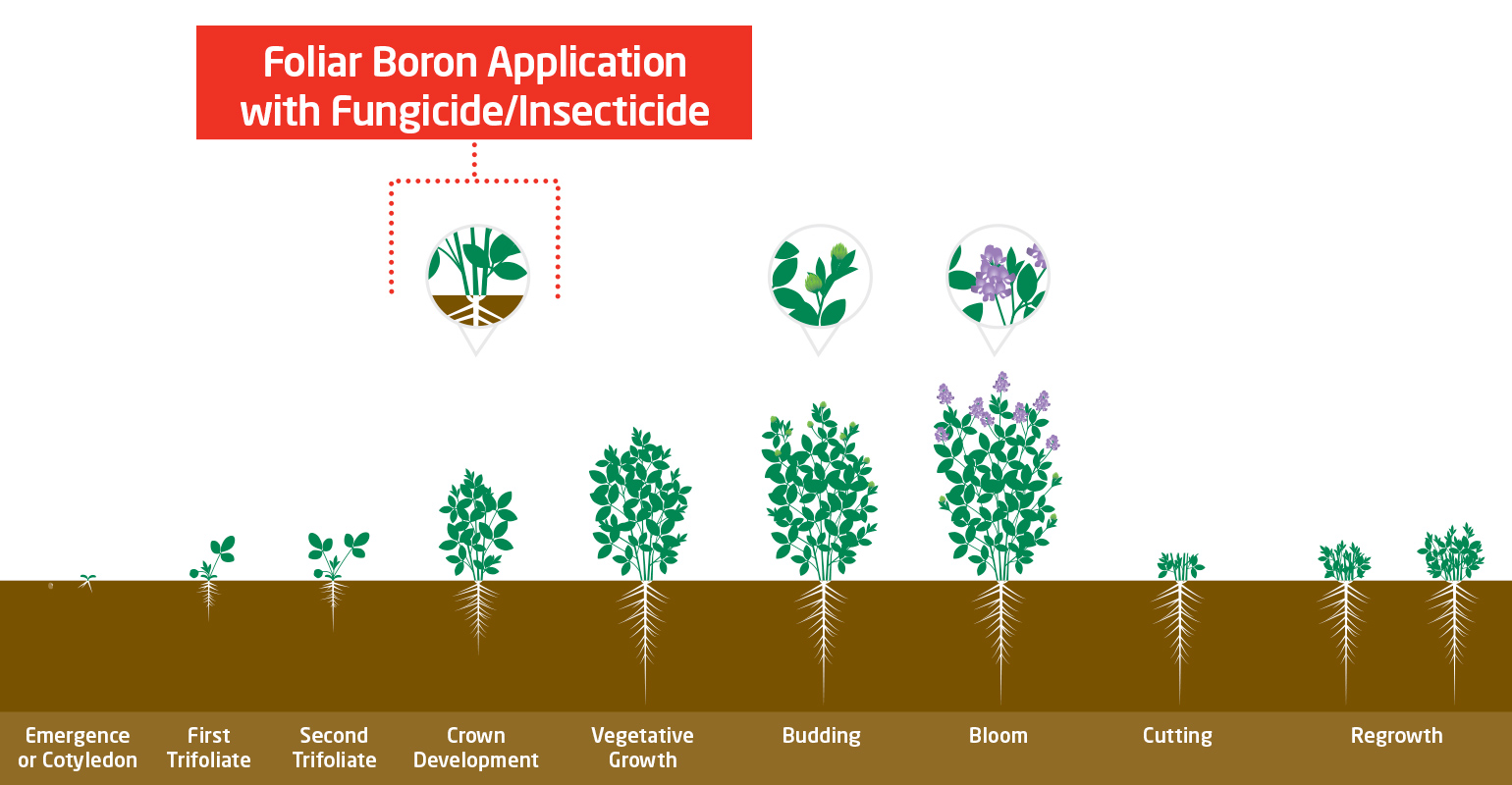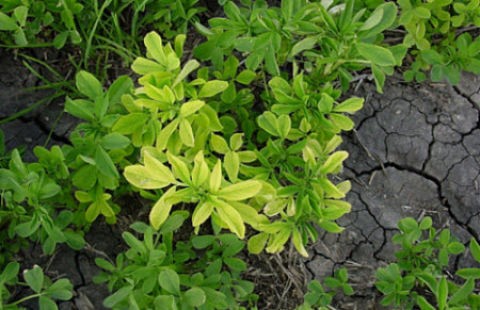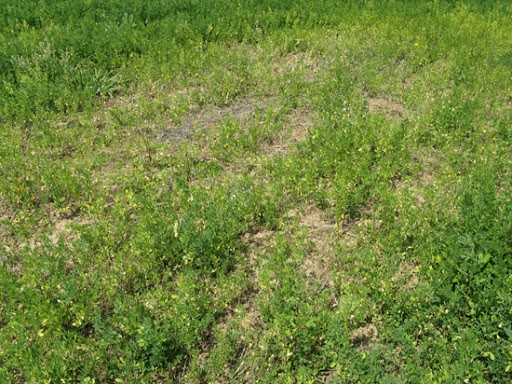Considerations for Boron Applications to Alfalfa
May 04, 2020
Agronomics
Boron (B) fertilization becomes increasingly important for alfalfa in high yield situations. Alfalfa is highly responsive to boron and is a “big user” of boron. Sufficient boron levels in alfalfa leaf tissue should be between 30 ppm to 80 ppm. When tissue test levels drop below 20 ppm, yields and protein levels will be reduced. Boron is important in nitrogen simulation and protein formation.
Boron deficiency in alfalfa affects cell development, it can cause shortened internode spacing and bunching of the top leaves. Severe deficiencies can cause the growing point to die.
If making a boron application, one should also evaluate other micronutrient needs based on soil fertility and growing condition. Additions of zinc, manganese and iron can also be beneficial applied in conjunction with boron.
Conditions Leading to Boron (B) Deficiencies
Boron is very water soluble and mobile in the soil. Deficiencies are related to soil type, organic matter content, rainfall and pH. Typically, well to excessively-drained sandy soils are most susceptible to boron deficiency. High rainfall or excessive irrigation can leach boron out of the root zone. Boron availability also decreases with increasing soil pH, particularly in alkaline‐calcareous soils. Boron uptake decreases under drought conditions. Boron is taken up by plant roots by mass flow. This means when roots uptake soil water, the B in soil solution flows into the plant roots. Under drought conditions, there is very little water and B flowing into the roots.
Key Application Timing and Rates
Boron can be applied to the soil as a fertilizer blend with phosphorous, potassium and sulfur when the alfalfa is dormant or between cuttings. However, B can also be applied as a foliar spray and absorbed by the alfalfa leaves. In addition, BRANDT's foliar B products can be tank-mixed with insecticides and fungicides.
The mobility of foliar-applied boron should be considered when selecting a boron product. While boron moves through the leaf into the plant quite well, it tends to bind to cell walls structures rapidly, resulting in decreased mobility. The translocation of boron to the growing points is fundamental to the success of foliar applied boron. BRANDT® Smart System® delivery technology protects boron from binding to cell walls, thus increasing its mobility within the plant.

BRANDT Smart B-Mo, contains a novel boron delivery system that dramatically improves boron mobility within the plant.
Key Foliar Products:
- BRANDT Smart B Mo (1 to 4 pts/acre) Excellent Foliar Mobility
- BRANDT Smart B (1 to 4 pts/acre) Excellent Foliar Mobility
- BRANDT Smart K B (1 to 4 qts/acre) Excellent Foliar Mobility – Great choice if additional K2O is needed
- N-Boron® (1 to 4 qts/acre) Good Foliar Mobility
- BRANDT® Manni-plex® Moly B (1 to 4qts/acre) Good Foliar Mobility
- BRANDT 10% Boron (1 to 4 qts/acre) Lower Foliar Mobility, Higher Application Rate
- BRANDT Smart Trio® (1 to 2 qt/acre) Good Foliar Mobility plus Zn and Mn, often beneficial to apply with boron.

Boron Deficiency Pictures

Symptoms of boron deficiency. Photo by University of MN Extension

Patch of boron deficiency alfalfa. Photo by University of Illinois
